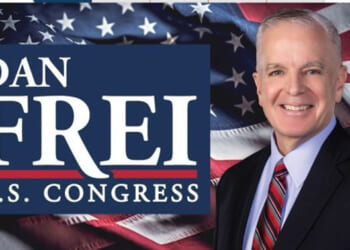
Don’t miss the full story from our staff writers, whose reportage is the basis of this article.
The Supreme Court issued a significant ruling Thursday that strengthens presidential power by allowing President Trump to fire Democratic appointees from major federal watchdog agencies. The decision effectively removes lower court injunctions that had previously blocked Trump’s dismissals of officials at the National Labor Relations Board (NLRB) and Merit Systems Protection Board (MSPB).
In an unsigned opinion, the court stated that because the Constitution grants executive power to the president, he may remove executive officers “without cause” who exercise that power on his behalf, with only narrow exceptions. This represents a watershed moment for presidential authority, suggesting the executive’s hiring and firing powers are broader than previously understood.
The ruling specifically involved the firings of Gwynne Wilcox from the NLRB and Cathy Harris from the MSPB. District judges had initially deemed these firings likely illegal and ordered both officials restored to their positions. However, the Supreme Court’s decision now allows Mr. Trump to keep these officials out of their posts while the cases continue developing in lower courts.
The court’s three Democratic appointees dissented strongly, arguing the majority was effectively overturning 90 years of precedent established in the 1935 Humphrey’s Executor decision. That landmark case had ruled that independent agencies with multi-member boards could be shielded from presidential firing. Justice Elena Kagan, writing for the dissenters, noted that no president since the 1950s had attempted to remove officers from independent agencies without legitimate cause.
The Trump administration offered no justification of misconduct or malfeasance for the firings, instead stating the officials were viewed as obstacles to the president’s agenda. The majority opinion indicated that for-cause protection laws cannot always survive constitutional scrutiny and must be evaluated case-by-case, with the key test being whether the agency exercises largely executive power.
Notably, the court explicitly stated that the Federal Reserve would not be affected by this new precedent, though Justice Kagan called this declaration puzzling since the Federal Reserve operates similarly to other affected agencies.
This ruling continues a pattern of the Supreme Court recognizing expansive presidential powers during Mr. Trump’s current term, including allowing him to fire the head of the Office of Special Counsel and revoke deportation amnesty for Venezuelan migrants, while also permitting the dismissal of probationary federal employees.
Read more: Supreme Court grants Trump broad powers to fire agency leaders
This article is written with the assistance of generative artificial intelligence based solely on Washington Times original reporting and wire services. For more information, please read our AI policy or contact Ann Wog, Managing Editor for Digital, at awog@washingtontimes.com
The Washington Times AI Ethics Newsroom Committee can be reached at aispotlight@washingtontimes.com.












